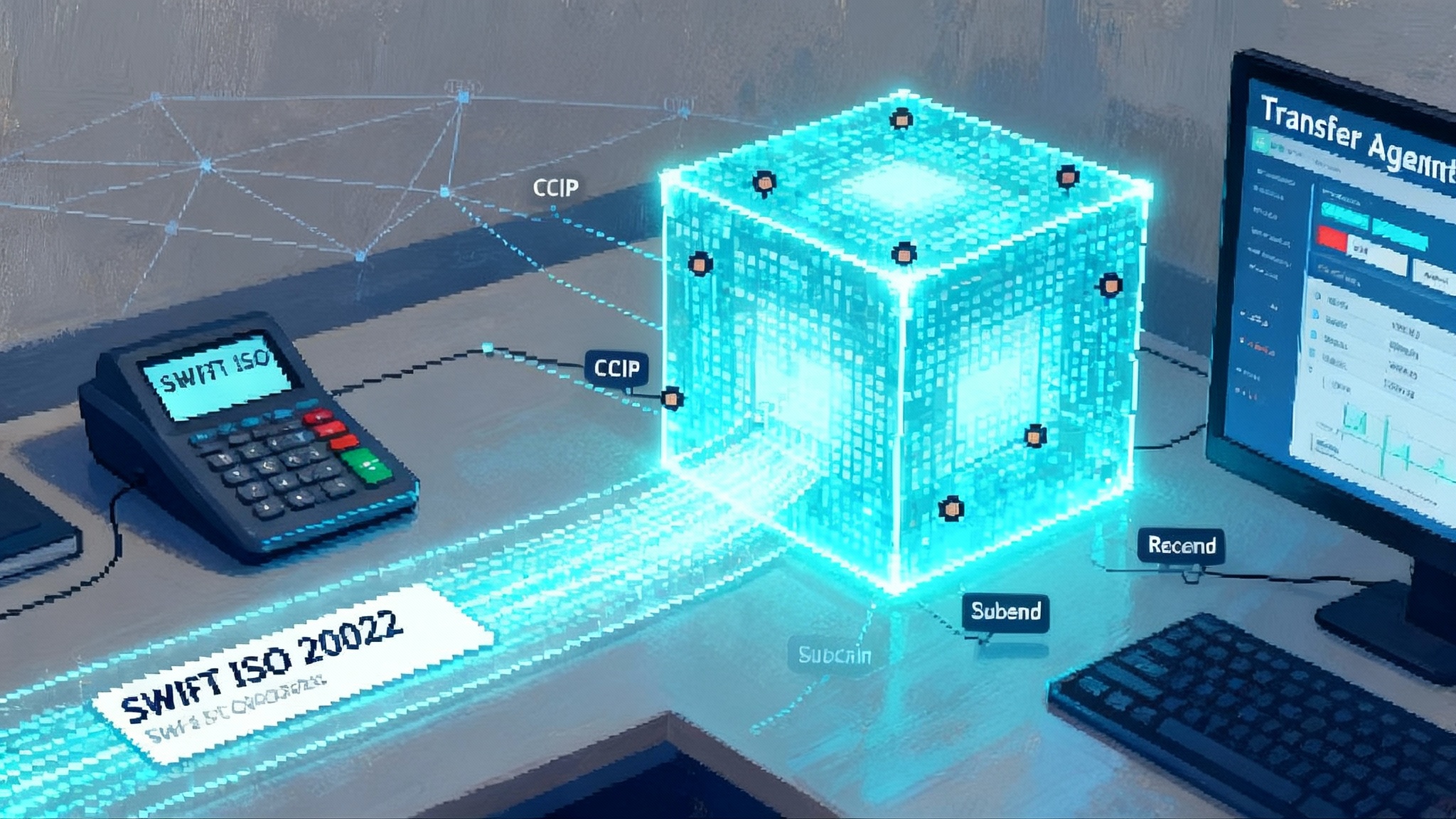Babylon Genesis turns Bitcoin into shared security for Web3
Babylon’s Genesis mainnet turns idle bitcoin into shared security you can stake natively to secure many chains, without wrapping or bridges. Here’s how it works, what went live on April 10, 2025, and why upcoming multi staking and EVM support could reshape rollups and app chains.

Breaking: Bitcoin goes from idle to indispensable
On April 10, 2025, Babylon switched on Genesis, a Cosmos-based blockchain that lets people stake bitcoin and use it as cryptographic security for other networks. In plain English, the world’s largest crypto asset can now backstop many chains at once, without ever leaving Bitcoin. Babylon calls these consumer networks Bitcoin Secured Networks. The launch was staged, with a brief setup window for validators and finality providers, and it marked the first time native bitcoin staking protected a live chain. Babylon’s Phase 2 announcement set the tone for what comes next.
Genesis turns bitcoin from a dormant store of value into a working shared security budget. That single shift reframes modular crypto. Instead of each new rollup or app chain issuing a fresh token to pay for its own security, teams can rent a slice of bitcoin’s economic weight. For builders, that means fewer token gymnastics and faster time to credible neutrality. For bitcoin holders, it introduces a way to earn network rewards while keeping coins on Bitcoin and in their control. This also echoes progress in Ethereum restaking, as seen in EigenLayer’s portable AVS model.
How it works, without the jargon
Think of bitcoin staking on Babylon like placing your coins in a time-locked Taproot script on Bitcoin. The lock defines who can open the box, under what conditions, and when. While the box is locked, you delegate security duties to an operator called a finality provider. Finality providers sign off on checkpoints for the networks they secure, and they earn rewards from those networks. If a finality provider cheats by signing two conflicting histories, a slashing process can take a predefined fraction of the staked bitcoin and send it to a burn address, with the rest returned to the staker after a waiting period. Because the coins never leave Bitcoin, the slashing logic is enforced by Bitcoin transactions and signatures.
One more ingredient matters. Babylon timestamps checkpoints to Bitcoin. That anchoring raises the cost of rewriting history and, as more blocks are mined, increases the finality of past checkpoints. It also enables faster and more predictable unbonding times, because the system can wait for a known amount of Bitcoin work rather than a social consensus to decide when funds are safely releasable.
To visualize the flow:
- You lock bitcoin into a Taproot script on Bitcoin, creating a stake.
- You delegate that stake to a finality provider that secures one or more networks.
- Those networks pay rewards to the finality provider and, after commission, to you, in their own tokens.
- If the operator misbehaves, the pre-signed slashing transaction can be broadcast on Bitcoin to penalize the stake.
All of this happens without wrapped assets or custodial bridges. The bitcoin stays bitcoin.
What Genesis already changed for builders
-
Cosmos teams gained a new path to security. App chains that previously needed a native token to recruit validators can lean on bitcoin stakers instead. For a new chain launching a lending protocol, for example, the team can spend development time on product rather than subsidy mechanics for validators.
-
Rollups now have a neutral backstop. On Ethereum, many rollups rely on the security of Ethereum and on social coordination in the case of faults. With Babylon, a rollup can buy additional finality with bitcoin-backed checkpoints. That is especially useful for consumer-facing apps where users care about quick, irreversible settlement rather than probabilistic finality.
-
Custodians and wallets got a new product. Genesis opened the door for regulated providers to offer native bitcoin staking as a service, complete with finality provider selection, monitoring, and reward distribution. For institutional treasurers who already hold bitcoin, this is a way to put that asset to work without changing mandates.
The next wave: multi staking and EVM support
Babylon’s roadmap for late 2025 is clear. The team plans to let a single bitcoin position secure multiple networks at once, and to add EVM support on Genesis so developers can deploy applications with familiar Ethereum tooling. The promise is simple: one stake, many reward streams, and a bigger pool of shared security that any chain can tap. The primary source is Babylon’s own roadmap update, which outlines multi staking testnets followed by mainnet activation alongside EVM capability and infrastructure upgrades. Babylon’s 2025 roadmap points to those milestones. As Ethereum evolves, expectations will be shaped by Post-Pectra upgrades and smart accounts.
Why this matters for markets: when the same pool of bitcoin can secure many chains, yields begin to compress toward a common rate for security. Today, fragmented staking markets pay wildly different rates because each chain competes for a limited set of operators and capital. Multi staking pushes those markets together. If ten rollups each pay to attract security, the marginal bitcoin decides where to lend its weight. In practice, that reduces the long tail of unsustainably high rewards and helps capital flow to applications with real usage that can afford competitive security fees.
What this unlocks for rollups and Cosmos chains
-
Faster, cheaper launches. A rollup that wants stronger finality can integrate Babylon checkpoints and pay a known fee rather than crafting a token with speculative value. Cosmos chains can launch without over-designing inflation schedules just to subsidize validators. A game chain, for instance, can spend its token budget on player incentives while buying bitcoin-backed finality during peak events.
-
Security without new trust assumptions. Because coins stay on Bitcoin, there is no bridge custodian to fail. The trust set is explicit: finality providers plus the covenant committee that co-signs slashing transactions, and Bitcoin miners who include the relevant transactions. That clarity makes it easier to reason about worst-case scenarios.
-
Better user experience. Timestamping to Bitcoin enables chains to shorten unbonding windows from weeks to hours or days while keeping slashability intact. That flexibility supports designs like fast exits from rollups or predictable withdrawal timelines for staking derivatives on Cosmos.
-
A path to consolidation. In modular crypto, many teams built their own security layers to get started. A neutral collateral layer lets those efforts converge. Instead of five tokens paying five sets of validators with five dashboards, a cluster of related apps can share a bitcoin-backed security budget and focus on distribution and product.
The practical tradeoffs teams must weigh
-
Finality provider selection and concentration. Operators do the heavy lifting. They sign checkpoints and run infrastructure that must not double sign. If the top few providers hold most delegated bitcoin, the system inherits concentration risk. Chains should publish minimum decentralization standards, for example a cap on the share any single provider can control, and reward diversity via commission structures.
-
Unstaking volatility. Unbonding is predictable in blocks, not minutes. If Bitcoin fees spike at the same time many users try to unbond, the cost to broadcast transactions rises and mempool delays can extend timelines. Babylon can tune parameters like minimum slashing transaction fees and unbonding delays, but teams should plan for stress periods. A practical mitigation is to disclose realistic withdrawal service level agreements and maintain buffers for exit liquidity in staking derivatives.
-
Economic alignment for rewards. Chains pay rewards in their own tokens. If those tokens are illiquid, the real yield a bitcoin staker receives can diverge from headline rates. The more multi staking compresses yields, the more important it becomes for consumer chains to either generate fee revenue or design reward schedules that do not decay before adoption ramps.
-
U.S. access limits. As of October 2025, Babylon’s interface blocks staking from or within the United States. Institutions have begun to offer access through regulated channels, but retail in the U.S. will likely be gated by venue policies and ongoing regulatory clarity. Teams that target U.S. users should plan for a phased rollout with geofenced interfaces or institutional-first partners. For macro context on Bitcoin’s policy footprint, see the U.S. Bitcoin reserve trajectory.
What to watch in the next 6 to 12 months
KPIs for chains and investors who want signal over noise:
- Bitcoin staked and activated
- Total bitcoin staked and the share actively securing networks. Watch for how quickly activation climbs after multi staking goes live. A rising activation rate indicates healthy demand from consumer chains.
- Finality provider set health
- Number of providers with meaningful delegation, the top five share, the Herfindahl index, and the rate of double sign incidents. Healthy security looks like a wide, growing set and no slashing events.
- Chain integrations and revenue
- Count of rollups and Cosmos chains paying for bitcoin-backed finality, plus the fees those chains spend per day. If the revenue line grows faster than token inflation, Babylon’s shared security is working as a real market, not just an airdrop echo.
- Time to irreversible settle
- For each integrated chain, publish the statistical time to Bitcoin-anchored finality under normal and peak fee conditions. User-facing apps should target sub-minute probabilistic finality with clear minutes-to-irreversible-settlement windows.
- Yield convergence
- Track the spread between rewards for single-chain staking on Genesis only and multi-staked rewards across several chains. Narrowing spreads signal that capital is allocating rationally and that security pricing is maturing.
- EVM developer traction
- Number of contracts deployed, monthly active developers, and total value secured on Genesis once EVM support lands. If EVM on Genesis makes it trivial to ship Bitcoin-native finance, you should see a quick ramp in deployments and testnet-to-mainnet migrations.
- Custodian coverage
- Which custodians, prime brokers, and wallets support native bitcoin staking and multi staking. Coverage in the United States via regulated banks will be a catalyst for large balance sheets to participate.
Concrete adoption paths for teams
-
For rollup teams: start with a pilot that anchors weekly checkpoints to Bitcoin through Babylon for high-value accounts. Measure settlement dispute rates and user support tickets tied to withdrawals. If metrics improve, expand coverage to all transactions and publish a security budget schedule that scales with usage.
-
For Cosmos app chains: replace a chunk of validator subsidies with a bitcoin security line item. Run a treasury simulation. If a token inflation cut from 12 percent to 6 percent extends runway by 18 months at today’s prices, and bitcoin-backed finality fits in the budget, you have a case to ship sooner with less dilution.
-
For custodians and wallets: integrate finality provider delegation and automated reward distribution with clear reporting. Offer risk tiering for clients, for example diversified finality provider baskets and auto-redelegation on commission hikes. Publish transparent unbonding timelines and fees during Bitcoin mempool spikes.
-
For DeFi builders: plan for EVM on Genesis by porting contracts that benefit from a bitcoin-secured settlement layer. Examples include bitcoin-collateralized credit markets, perps with Bitcoin-anchored settlement, and payments rails where the final receipt is timestamped to Bitcoin for audit trails. Developer expectations will be influenced by Post-Pectra upgrades and smart accounts.
The bigger implication: a neutral collateral layer speeds consolidation
Bitcoin is uniquely positioned to become the neutral base collateral for modular crypto. It has the largest market value, the deepest holder base, and the most battle-tested settlement. Babylon turns that passive weight into an active budget that any chain can rent. Multi staking multiplies the effect by letting the same capital protect many networks at once. As yields converge, smaller tokens stop pretending to be security providers and focus on governance or user incentives. The industry consolidates around a few shared layers and many specialized apps.
That consolidation is good for users. Fewer tokens to track for security. Clearer guarantees about what happens when things go wrong. Withdrawal timelines measured in hours instead of weeks. And a shared understanding that finality is something you can point to on Bitcoin, not just a promise.
What to do now
-
If you are a team building a rollup or app chain, begin a security budget evaluation that includes bitcoin-backed finality. Map your costs to user journeys like withdrawals and large transactions, and publish the plan.
-
If you hold bitcoin and want to participate, study finality providers like you would a validator. Look at commission, uptime, track record, and how they manage keys. Diversify across several and set alerts for parameter changes such as unbonding delays and minimum slashing fees.
-
If you are a developer, prototype on a testnet that mirrors the EVM feature set. The fastest path to product-market fit is to ship an existing application where bitcoin backing changes the value proposition. For example, a consumer wallet that displays an on-chain receipt secured by a Bitcoin timestamp.
The bottom line
Bitcoin staking on Babylon is not a marketing slogan. It is a concrete mechanism that keeps coins on Bitcoin while exporting finality to other chains. Genesis made it real on April 10, 2025. The next wave, multi staking across many chains with EVM app support, raises the ceiling. If the numbers over the next year show growing activation, healthy operator diversity, and yield convergence, bitcoin will have taken on a new job. It will not just be digital gold sitting still. It will be the collateral spine for a more consolidated, more usable modular crypto stack.





